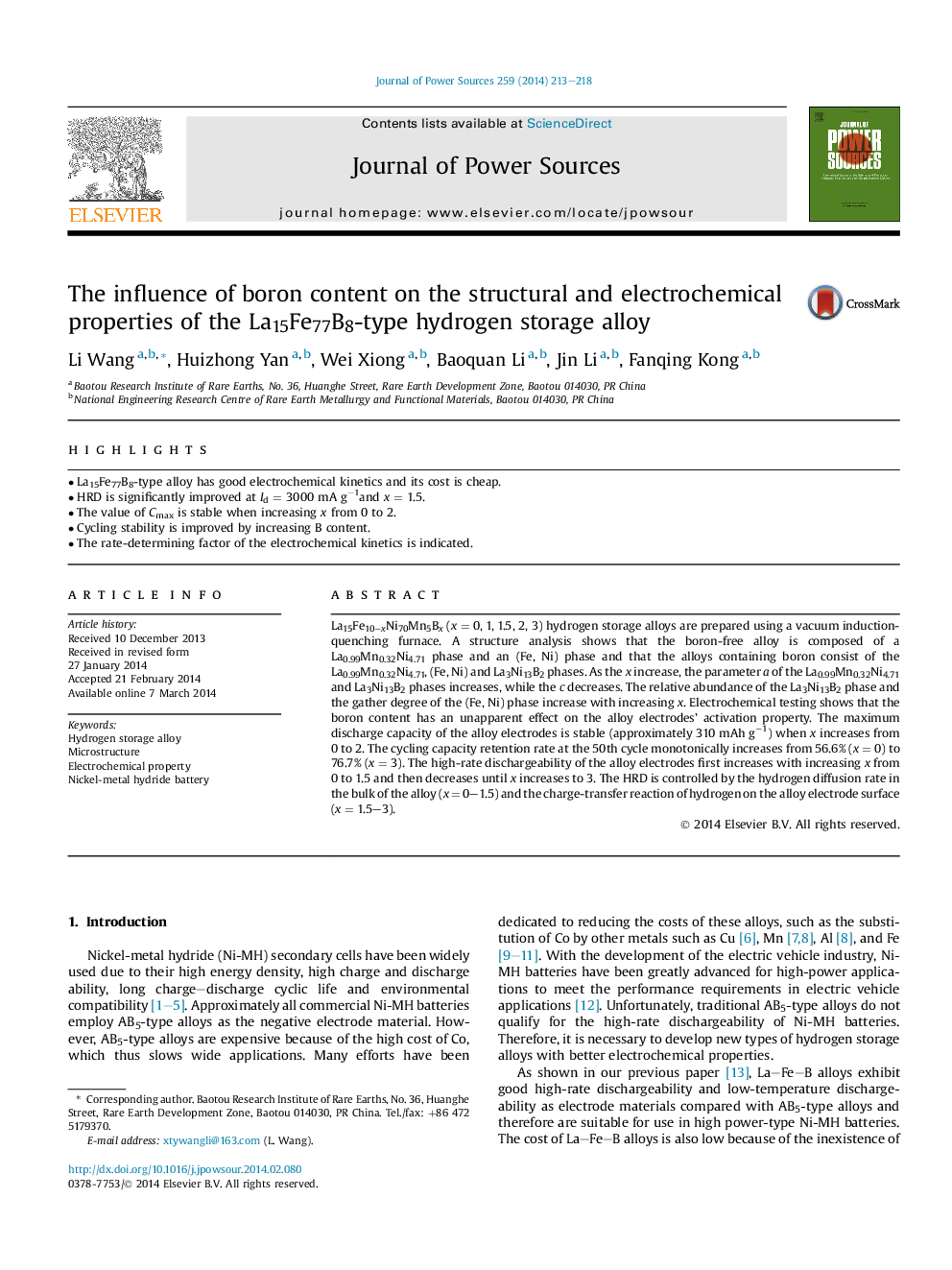| Article ID | Journal | Published Year | Pages | File Type |
|---|---|---|---|---|
| 1286878 | Journal of Power Sources | 2014 | 6 Pages |
•La15Fe77B8-type alloy has good electrochemical kinetics and its cost is cheap.•HRD is significantly improved at Id = 3000 mA g−1and x = 1.5.•The value of Cmax is stable when increasing x from 0 to 2.•Cycling stability is improved by increasing B content.•The rate-determining factor of the electrochemical kinetics is indicated.
La15Fe10−xNi70Mn5Bx (x = 0, 1, 1.5, 2, 3) hydrogen storage alloys are prepared using a vacuum induction-quenching furnace. A structure analysis shows that the boron-free alloy is composed of a La0.99Mn0.32Ni4.71 phase and an (Fe, Ni) phase and that the alloys containing boron consist of the La0.99Mn0.32Ni4.71, (Fe, Ni) and La3Ni13B2 phases. As the x increase, the parameter a of the La0.99Mn0.32Ni4.71 and La3Ni13B2 phases increases, while the c decreases. The relative abundance of the La3Ni13B2 phase and the gather degree of the (Fe, Ni) phase increase with increasing x. Electrochemical testing shows that the boron content has an unapparent effect on the alloy electrodes' activation property. The maximum discharge capacity of the alloy electrodes is stable (approximately 310 mAh g−1) when x increases from 0 to 2. The cycling capacity retention rate at the 50th cycle monotonically increases from 56.6% (x = 0) to 76.7% (x = 3). The high-rate dischargeability of the alloy electrodes first increases with increasing x from 0 to 1.5 and then decreases until x increases to 3. The HRD is controlled by the hydrogen diffusion rate in the bulk of the alloy (x = 0–1.5) and the charge-transfer reaction of hydrogen on the alloy electrode surface (x = 1.5–3).
